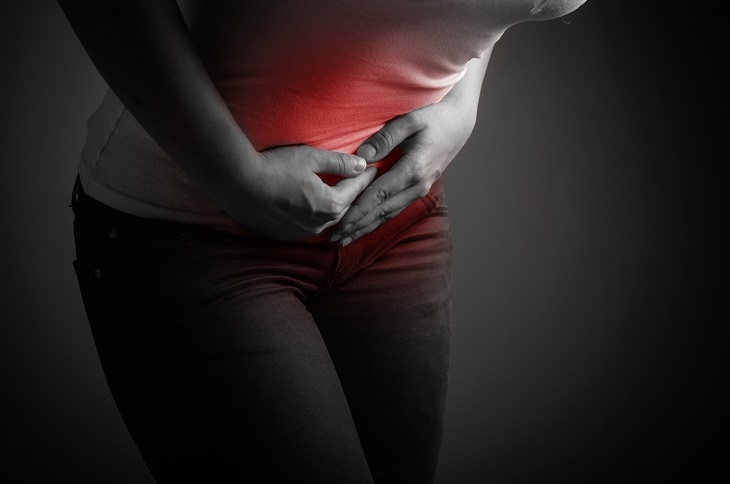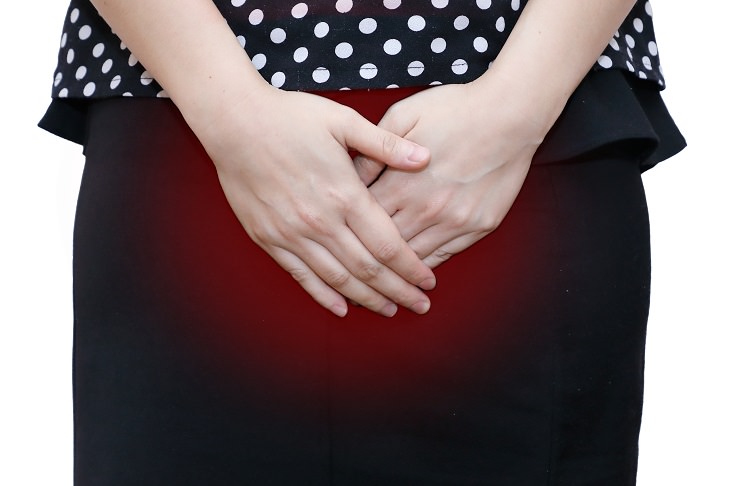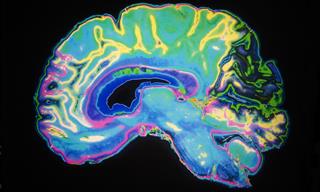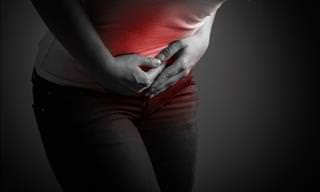Pain associated with endometriosis is usually more intense during menstruation, but for some women, it occurs at any time. Endometriosis occurs when tissue starts to grow outside of the uterus’s lining into other parts of the body, including the ovaries, bladder, or fallopian tubes.
Women who suffer from this condition describe debilitating pain that feels like stabbing, crushing, or unbearable cramps. Pain might also be felt during intercourse.
Cysts
Your body produces an ovarian cyst during the normal stages of menstruation and ovulation. When a woman ovulates, they might feel some pain. However, there are other types of ovarian cysts that can grow within the ovaries and cause pain, discomfort, or dysfunction in the reproductive system.
These cysts will either disappear on their own, or might need to be surgically removed.
UTI
A urinary tract infection is one of the most common causes of pelvic pain in women. It might or might not be accompanied by other symptoms such as pain when urinating, an excessive urge to urinate, cloudy urine, or fever.
Fibroids
Though usually benign, fibroid tumors can grow so big that they cause pelvic pain and pressure, abnormal bleeding, or leg pain. Pain from fibroids may come and go or be consistent, and can become more noticeable after sex, exercise, menstruation, or a bowel movement.
Treatment might involve pain relief medication or surgery.
Sexually transmitted infections can cause the pelvic area to become inflamed unless they are treated quickly. Chlamydia and gonorrhea are usually the main culprits behind pelvic pain, but other non-sexual infections can also lead to pelvic inflammation and pain. All require medical treatment to resolve.
Interstitial Cystitis
In layman’s terms, this condition causes inflammation in the bladder, with no infection being present most of the time. The pain can be excruciating and last for weeks or months at a time, or it can be intermittent, feeling like pressure or a small bout of pain.
Symptoms might be mild or resemble those of a UTI. Women might also feel pain before urinating or after intercourse. Treatment usually entails medication, surgery, or physical therapy.
Kidney Stones
Women might also have pelvic pain thanks to kidney stones. When a crystallized stone travels from the kidney through the urinary tract, it can cause problems while trying to pass. The pain that occurs might be sharp and last for hours, or might be accompanied by back pain.
If you have this type of pain, or a fever, red urine, or painful urination, seek medical attention as soon as possible.
Source: tiphero
Images: depositphotos
 Go to BabaMail
Go to BabaMail


























